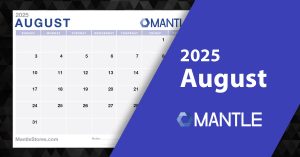Harnessing Data for Success: A Guide for Game Store Retailers
In the ever-evolving world of retail, particularly in the aspect of a game store, data isn’t just numbers and charts – it’s the secret ingredient to your store’s success. Understanding and leveraging different types of retail data can transform your business, boost customer experiences, and build your sales. This article serves as a guide for retailers, learning the types of data you should be collecting and why each is a crucial part of your business. At worst, hopefully answer some questions about data for whenever someone is talking about data and just says, “well the data says…” and you are lost. Each section has a deeper dive as well.
Sales Data: Your Performance Indicator
What and Why: Sales data is the cornerstone of retail analytics. It tells you what games or accessories are selling, when they’re selling, and how much revenue they’re bringing in. This data is your direct feedback on market preferences and your store’s financial health. Using direct sales data will help determine sales per square foot you give it, as well as help you determine if a product sells better during events or not. Actionable Insights: Use sales data to identify trends and patterns, enabling you to make informed decisions about which products to stock up on and which to phase out. It also helps in planning promotions and discounts based on popular items. If your store is event-heavy, look at the products that sell better during events, card accessories, dice, or certain product lines.
Want a deeper dive? Check out this article
Inventory Data: Balancing Act
What and Why: Inventory data involves knowing what’s in stock, how fast items are selling, and when to reorder. Efficient inventory management avoids two critical pitfalls – overstocking, which ties up your capital, and stockouts, which lead to missed sales opportunities.
Actionable Insights: Regular inventory analysis helps in maintaining the perfect balance – enough stock to meet demand but not so much that your storage is overflowing with unsold products.
Want a deeper understanding? Check out this article
Customer Data: Know Your Audience
What and Why: Gathering information about your customers – who they are and their buying habits – can significantly enhance the shopping experience you offer. This data is invaluable for targeted marketing and personalized customer engagement.
Actionable Insights: Utilize customer data to tailor your product range, marketing efforts, and even store layout to better suit your primary customer base.
Want to know your customers better? Check out this article
Foot Traffic Data: Measuring Store Attractiveness
What and Why (For Physical Stores): Counting how many people visit your store can offer insights into the effectiveness of your store layout, window displays, and promotions.
Actionable Insights: Analyze peak times for customer visits to optimize staffing schedules and promotional activities.
Online Engagement Data: Digital Footprint
What and Why (For Online Retailers): This encompasses website traffic, product views, and social media interactions. It’s a measure of your store’s online presence and the effectiveness of your digital marketing.
Actionable Insights: Use this data to refine your online marketing strategies, improve website layout, and enhance online customer service.
We dive deeper into online data here.
Employee Performance Data: Team Strength
What and Why: This data includes sales per employee and customer service feedback. It’s essential for understanding your team’s strengths and areas for improvement.
Actionable Insights: Recognize high performers for their efforts and identify training needs to elevate overall customer service.
Conclusion: Data as a Storyteller
Each data type tells a different chapter of your store’s story. Sales data narrates your financial performance, inventory data highlights operational efficiency, customer data speaks about your audience, foot traffic and online engagement data reflect your store’s appeal, and employee data underscores your team’s capabilities.
As a new game store retailer, embracing these data points is like having a roadmap to success. It’s not just about collecting numbers; it’s about interpreting these numbers to make smarter, more informed decisions. Remember, in the world of retail, knowledge is power, and data is knowledge.
Start simple, use technology to aid your data collection, regularly review the insights, focus on customer experience, be adaptable, and always respect privacy. By mastering the art of data analysis, you’re not just running a store; you’re crafting an experience, both for yourself and for your gaming community. Welcome to the future of retail, where data leads the way!









